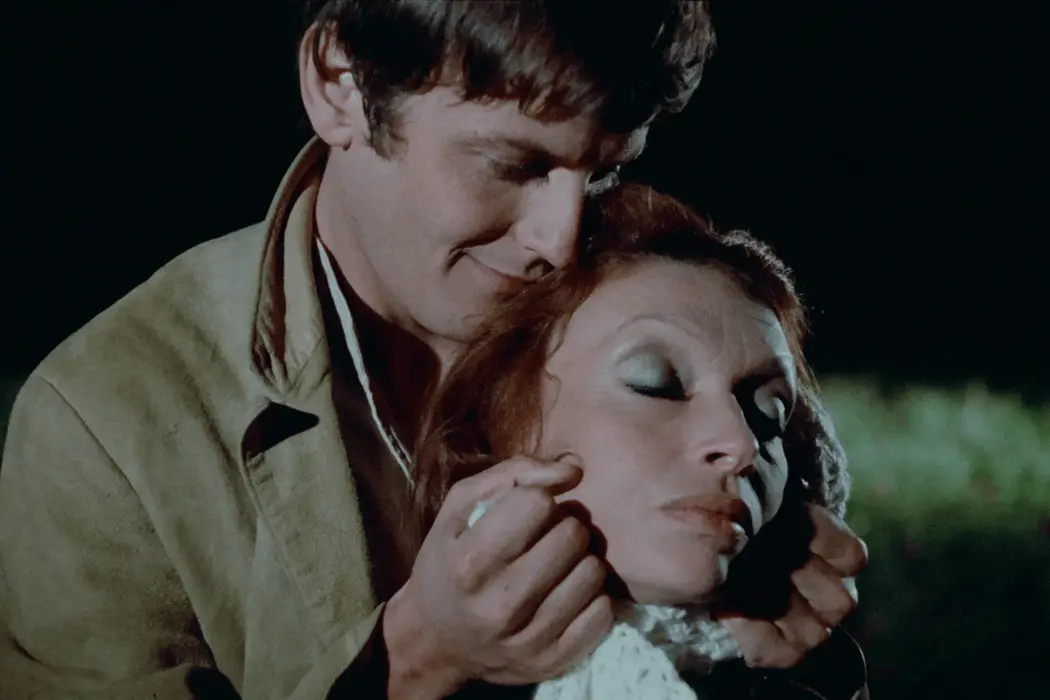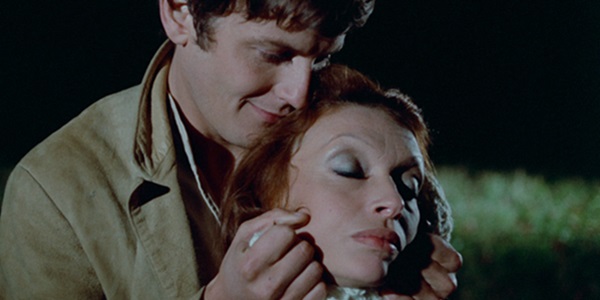THE STRANGLER: An Underseen French Giallo Emerges from the Shadows

Lee Jutton has directed short films starring a killer toaster,…
Just before giallo—the subgenre of Italian crime thriller named for the distinctive yellow covers of the pulp novels published by Mondatori—began to break through on the big screen courtesy of films like Dario Argento’s The Bird with the Crystal Plumage and Mario Bava’s Hatchet for the Honeymoon, French filmmaker Paul Vecchiali released a twisted tale of melancholy and murder — The Strangler — that deserves to be ranked among the genre’s most intriguing. (Though, being that it’s French, I’m tempted to suggest it be called a jaune.)
The Strangler focuses on a young man who is so deeply affected by lonely women (not to mention, a very distinct moment of childhood trauma) that he targets them in what he believes are mercy killings. Hot on his tail is an unlikely trio: a police detective, a young woman who thinks she may be one of the next victims, and a petty thief who robs the dead as soon as the strangler has left the scene of the crime. It’s a strange, seductive film that paved the way for many to follow, yet somehow never received a U.S. theatrical release—that is, until now. With Altered Innocence bringing a new 2K restoration of The Strangler to theaters across the U.S. following screenings this fall at Fantastic Fest and the New York Film Festival, there’s no better time to fall under its spell.
Night of Violence
As a small child, Émile sneaks out of his house one night and encounters a strange man who takes the boy’s white knitted scarf and uses it to strangle a woman walking down the street. As a young adult, Émile (Jacques Perrin of The Young Girls of Rochefort and Cinema Paradiso, among many others) works in a fruit and vegetable market by day and prowls the Paris streets at night, looking for desperately lonely women who seem to have no reason to go on living. Once he has identified an appropriate victim, he takes out a child’s white knitted scarf—homemade replicas of the one he saw used to kill so many years ago—and strangles them to death. Yet his killings seem to be strangely lacking in malice; if anything, they’re almost merciful, with the victims often realizing what is happening and leaning into Émile’s suffocating, yet somehow still sensual, embrace with sad smiles on their faces.

Detective Simon Dangret (Julien Guiomar) is growing desperate to catch the killer, even masquerading as a psychologist to go on television and attempt to lure him out of hiding. Instead, he accidentally draws Anna (Eva Simonet), a lovely young woman in the aftermath of a recent breakup, into his orbit. A precursor to today’s true crime obsessives if there ever was one, Anna is convinced that her loneliness makes her an ideal victim for the killer, and offers herself up to Dangret as potential bait. Yet despite their willingness to cross lines of ethics and safety in order to snare the killer, the two of them still end up with far more than what they bargained for—as does a thief known as Le Chacal (Paul Barge), who has developed a neat habit of waiting for Émile to depart post-murder before robbing the victims.
Death Walks at Midnight
In telling the subversive story of The Strangler, Vecchiali avoids succumbing to easy shocks like blood and gore; instead, he sets up an atmosphere that is rife with anxiety and dread—especially if you are a woman. (At one point in the film, when asked why all his victims are female, Émile simply says that he’s never encountered a man walking the streets at night in the same sort of misery, though it’s obvious such misery is what plagues him and drives him to kill.) With each killing, the public hysteria grows, emphasized in Vecchiali’s film by the shouts of the newspaper boys flogging their increasingly sensationalist headlines in the streets and the flocks of rubberneckers shrieking at the scene of every newly discovered crime.

The Strangler is most stunning when the sun goes down and it depicts the strange, surreal underworld that emerges on the Paris streets at night. One of my favorite scenes in the film centers on a café run by a woman who caters to a clientele of sex workers, providing them with late-night sustenance in the form of tea and ham; when Le Chacal is accidentally mistaken for the strangler who has been targeting lonely women, the sex workers bring him before an all-woman people’s court at the café that debates how best to mete out justice. In another scene, Émile encounters a man who seems to be propositioning him before then threatening him; whereas Émile targets the lonely, he appears to target possible homosexuals, whether out of sheer bigotry or fear of his own sexuality (more likely, a combination of the two). Indeed, queerness runs like an undercurrent throughout The Strangler, contributing to the isolation felt by so many of its characters as they hover on the margins of society.
The plot has a lot of twists and turns, but as in the best gialli, the specific details that comprise the characters and the world they live in that are more important to one’s enjoyment of The Strangler than the logistical aspects of the story. Perrin’s boyish good looks and soft-spoken voice are the opposite of what you’d expect from a killer, and yet that’s what makes him such a perfect Émile; he’s an unlikely psychopath, which makes him all the more terrifying. When he approaches his victims, whether it be a cabaret singer contemplating drowning herself after a gig or a retired actress feeling wholly forgotten, you can see why they’d initially trust him—and when you witness their intense sadness, you can see why they might welcome the reprieve from life offered by his signature white scarf.

They often don’t even make a sound; all you can see is the light glinting gently on their tear-streaked cheeks. At one point in the film, Émile argues that in some cases he is actually prolonging his victims’ lives, or at least giving them an easier way out than the one they were contemplating before they met him. He is so fully convinced that he is doing the right thing that he almost convinces you he is too—and that might be the scariest thing of all.
Conclusion
A thriller as haunting and enigmatic as its titular character, The Strangler should appeal to giallo aficionados and beyond.
The new 2K restoration of The Strangler opens November 15, 2023 at Anthology Film Archives in New York before expanding to other markets nationwide. You can find additional theatrical release dates here.
Does content like this matter to you?
Become a Member and support film journalism. Unlock access to all of Film Inquiry`s great articles. Join a community of like-minded readers who are passionate about cinema - get access to our private members Network, give back to independent filmmakers, and more.
Lee Jutton has directed short films starring a killer toaster, a killer Christmas tree, and a not-killer leopard. Her writing has appeared in publications such as Film School Rejects, Bitch: A Feminist Response to Pop Culture, Bitch Flicks, TV Fanatic, and Just Press Play. When not watching, making, or writing about films, she can usually be found on Twitter obsessing over soccer, BTS, and her cat.













